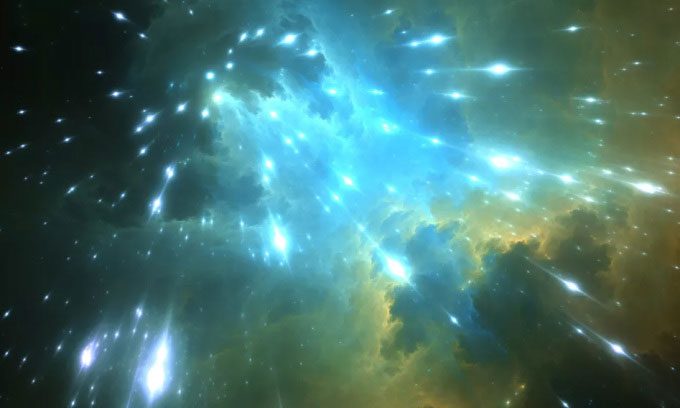Scientists Develop Global Positioning System That Can Track Underground Movements Using Powerful Cosmic Rays.
Cosmic rays are high-energy particles originating from outer space, including sources such as the Sun, distant galaxies, supernovae, and other celestial bodies. Although humans cannot see or directly perceive cosmic rays, they continuously bombard Earth from space. In fact, they are so abundant that scientists estimate that every minute, a cosmic ray strikes an area of 1 cm2 of Earth’s surface.

Illustration of cosmic rays striking Earth from space. (Image: Shutterstock).
A research team led by Professor Hiroyuki Tanaka from the University of Tokyo utilizes cosmic rays to develop a global positioning system capable of tracking movements underground, as reported by Interesting Engineering on June 18. The new study has been published in the journal iScience.
When cosmic rays enter Earth’s atmosphere, they collide with molecules and atoms in the air, producing secondary particles called muons. Muons are fundamental subatomic particles similar to electrons but are over 200 times heavier. Muons can penetrate solid objects, with the degree of penetration depending on the object’s density. For example, rocks and buildings absorb more muons due to their higher density.
In contrast, traditional GPS relies on radio waves that tend to be weaker at higher altitudes and are easily scattered. This makes it challenging to use GPS for detecting underground movements.
Tanaka and his colleagues harness the properties of cosmic rays to map inaccessible areas such as volcanoes, the core of nuclear reactors, and pyramids. They developed a new wireless positioning system utilizing muons, named MuWNS. The system consists of surface reference detectors and an underground receiver detector to track the path of muons. By analyzing the time and direction of the muons, MuWNS determines the relative position of the underground receiver detector compared to the surface reference detectors.
Subsequently, all collected data helps reconstruct the path of the muons to create a model or map of the underground area. The map can provide valuable information, such as the composition and density of the materials the muons pass through, allowing experts to visualize the structures and geological features underground.
The research team tested the MuWNS system by placing a receiver detector in the basement and four reference detectors on the sixth floor of a building. They successfully reconstructed the path of a person in the basement by filtering the cosmic rays detected by the detectors.
The team has demonstrated the world’s first cosmic ray-based global positioning system, which can support future search and rescue missions and volcanic monitoring activities. Next, they plan to enhance MuWNS for integration into smartphones.


















































